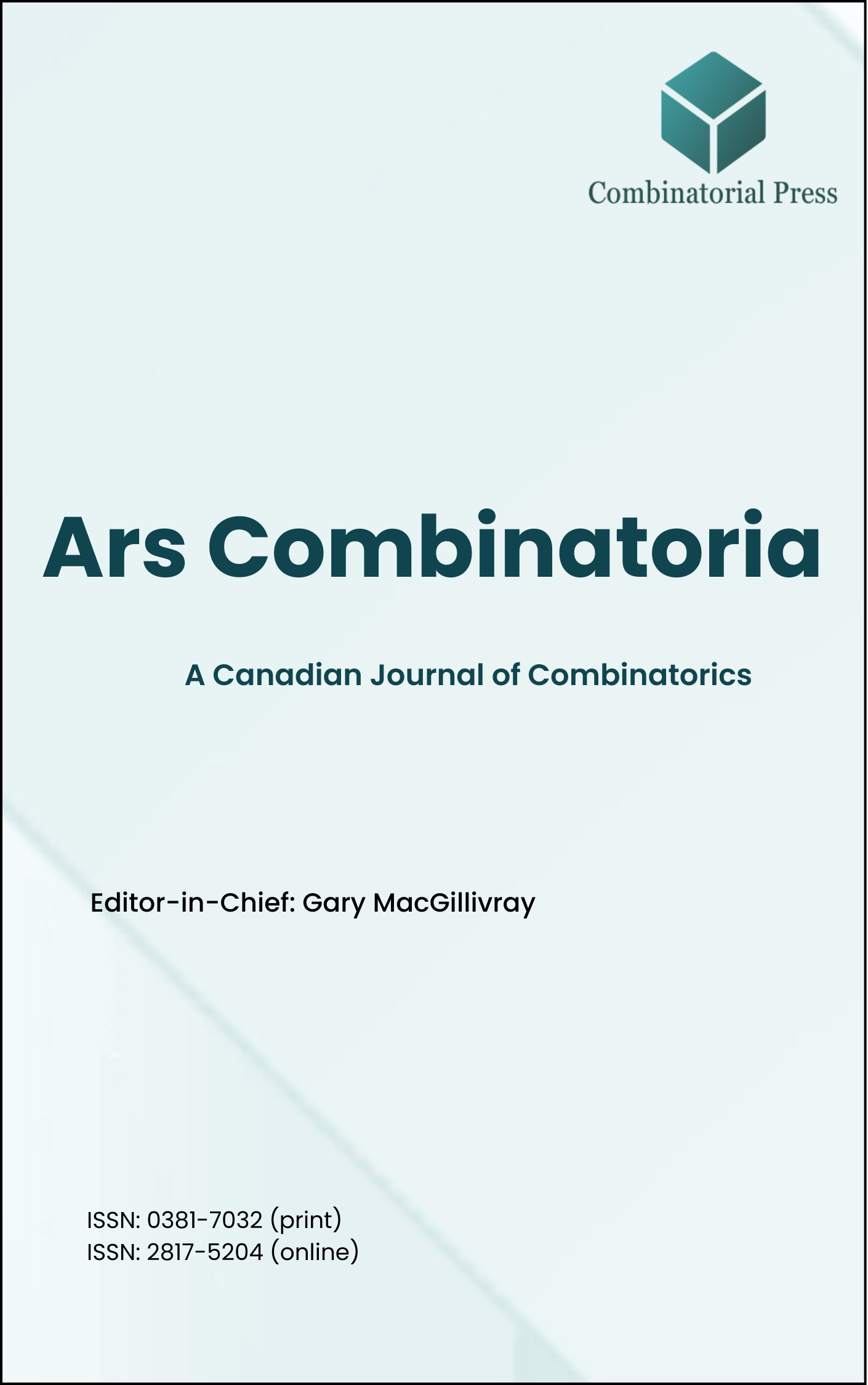
Ars Combinatoria
ISSN 0381-7032 (print), 2817-5204 (online)
Ars Combinatoria is the oldest Canadian Journal of Combinatorics, established in 1976. The journal is dedicated to advancing the field of combinatorial mathematics through the publication of high-quality research papers. From 2024 onward, it publishes four volumes per year in March, June, September and December. Ars Combinatoria has gained recognition and visibility in the academic community and is indexed in renowned databases such as MathSciNet, Zentralblatt, and Scopus. The Scope of the journal includes Graph theory, Design theory, Extremal combinatorics, Enumeration, Algebraic combinatorics, Combinatorial optimization, Ramsey theory, Automorphism groups, Coding theory, Finite geometries, Chemical graph theory but not limited.
Information Menu
- Research article
- Full Text
- Ars Combinatoria
- Volume 099
- Pages: 473-486
- Published: 30/04/2011
Let
- Research article
- Full Text
- Ars Combinatoria
- Volume 099
- Pages: 359-364
- Published: 30/04/2011
In this paper, we give generalizations of Padovan numbers and Perrin numbers. We apply these generalizations for counting of special subsets of the set of
- Research article
- Full Text
- Ars Combinatoria
- Volume 099
- Pages: 461-471
- Published: 30/04/2011
In this paper, we show that the crossing number of the complete multipartite graph
Our proof depends on Kleitman’s results for the complete bipartite graphs [D. J. Kleitman, The crossing number of
- Research article
- Full Text
- Ars Combinatoria
- Volume 099
- Pages: 353-358
- Published: 30/04/2011
A near-perfect matching is a matching saturating all but one vertex in a graph. In this note, it is proved that if a graph has a near-perfect matching then it has at least two, moreover, a concise structure construction for all graphs with exactly two near-perfect matchings is given. We also prove that every connected claw-free graph
- Research article
- Full Text
- Ars Combinatoria
- Volume 099
- Pages: 429-437
- Published: 30/04/2011
In this paper, we introduce some contractive conditions of Meir-Keeler type for a pair of mappings, called MK-pair and L-pair, in the framework of cone metric spaces. We prove theorems which assure the existence and uniqueness of common fixed points for MK-pairs and L-pairs. As an application, we obtain a result on the common fixed point of a p-MK-pair, a mapping, and a multifunction in complete cone metric spaces. These results extend and generalize well-known comparable results in the literature.
- Research article
- Full Text
- Ars Combinatoria
- Volume 099
- Pages: 439-444
- Published: 30/04/2011
Four new combinatorial identities involving certain generalized
- Research article
- Full Text
- Ars Combinatoria
- Volume 099
- Pages: 445-459
- Published: 30/04/2011
le of an edge-coloured graph
- Research article
- Full Text
- Ars Combinatoria
- Volume 099
- Pages: 415-419
- Published: 30/04/2011
Let
- Research article
- Full Text
- Ars Combinatoria
- Volume 099
- Pages: 421-428
- Published: 30/04/2011
A digraph
- Research article
- Full Text
- Ars Combinatoria
- Volume 099
- Pages: 335-352
- Published: 30/04/2011
Candelabra quadruple systems, which are usually denoted by





